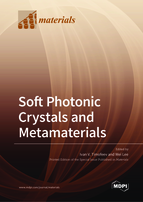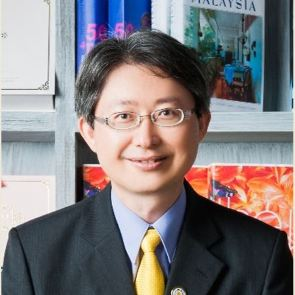Soft Photonic Crystals and Metamaterials
A special issue of Materials (ISSN 1996-1944). This special issue belongs to the section "Optical and Photonic Materials".
Deadline for manuscript submissions: closed (10 September 2022) | Viewed by 22177
Special Issue Editors
2. Siberian Federal University, 660041 Krasnoyarsk, Russia
Interests: photonic crystals and metamaterials; liquid crystals; Tamm plasmon polaritons; bound states in the continuum; Pancharatnam–Berry geometric phase
Interests: liquid crystals; polymeric composites; colloids; photonic crystals; metamaterials; liquid-crystal-based biosensors
Special Issues, Collections and Topics in MDPI journals
Special Issue Information
Dear Colleagues,
Soft matters include polymers, liquid crystals, colloids, biological tissues, and many smart materials. Weak molecular interactions make them sensitive to tiny mechanical, thermal, electric, optical, and other external stimuli. Photonic applications often require soft materials with significant or, in some cases, extreme optical dispersion, nonlinear and anisotropic properties. Optical response can be structurally amplified in two fairly distinct scales that are wavelength-comparable periods of soft photonic crystals and subwavelength-graded soft photonic metamaterials. This Special Issue is open to manuscripts concerning optical, topological, and interface-science phenomena and applications involving “Soft Photonic Crystals and Metamaterials” in areas that include but are not limited to:
- All-dielectric high-quality resonances, interface, and defect light localization, mode coupling and avoided crossing;
- Chirality and angular momentum, structured light and photonic transport protection;
- Photovoltaic and photosynthetic light harvesting;
- Soft photonic materials, structures, circuitry and devices.
Dr. Ivan V. Timofeev
Prof. Wei Lee
Guest Editors
Manuscript Submission Information
Manuscripts should be submitted online at www.mdpi.com by registering and logging in to this website. Once you are registered, click here to go to the submission form. Manuscripts can be submitted until the deadline. All submissions that pass pre-check are peer-reviewed. Accepted papers will be published continuously in the journal (as soon as accepted) and will be listed together on the special issue website. Research articles, review articles as well as short communications are invited. For planned papers, a title and short abstract (about 100 words) can be sent to the Editorial Office for announcement on this website.
Submitted manuscripts should not have been published previously, nor be under consideration for publication elsewhere (except conference proceedings papers). All manuscripts are thoroughly refereed through a single-blind peer-review process. A guide for authors and other relevant information for submission of manuscripts is available on the Instructions for Authors page. Materials is an international peer-reviewed open access semimonthly journal published by MDPI.
Please visit the Instructions for Authors page before submitting a manuscript. The Article Processing Charge (APC) for publication in this open access journal is 2600 CHF (Swiss Francs). Submitted papers should be well formatted and use good English. Authors may use MDPI's English editing service prior to publication or during author revisions.
Keywords
- Photonic crystals
- Metamaterials and metasurfaces
- Surface plasmon polaritons
- Tamm states
- Fano and Mie resonances
- Topological photonics
- Pancharatnam–Berry and Zack geometric phases
- Soft materials
- Liquid crystals
- Polymers
- Colloidal systems
- Nanocomposites








